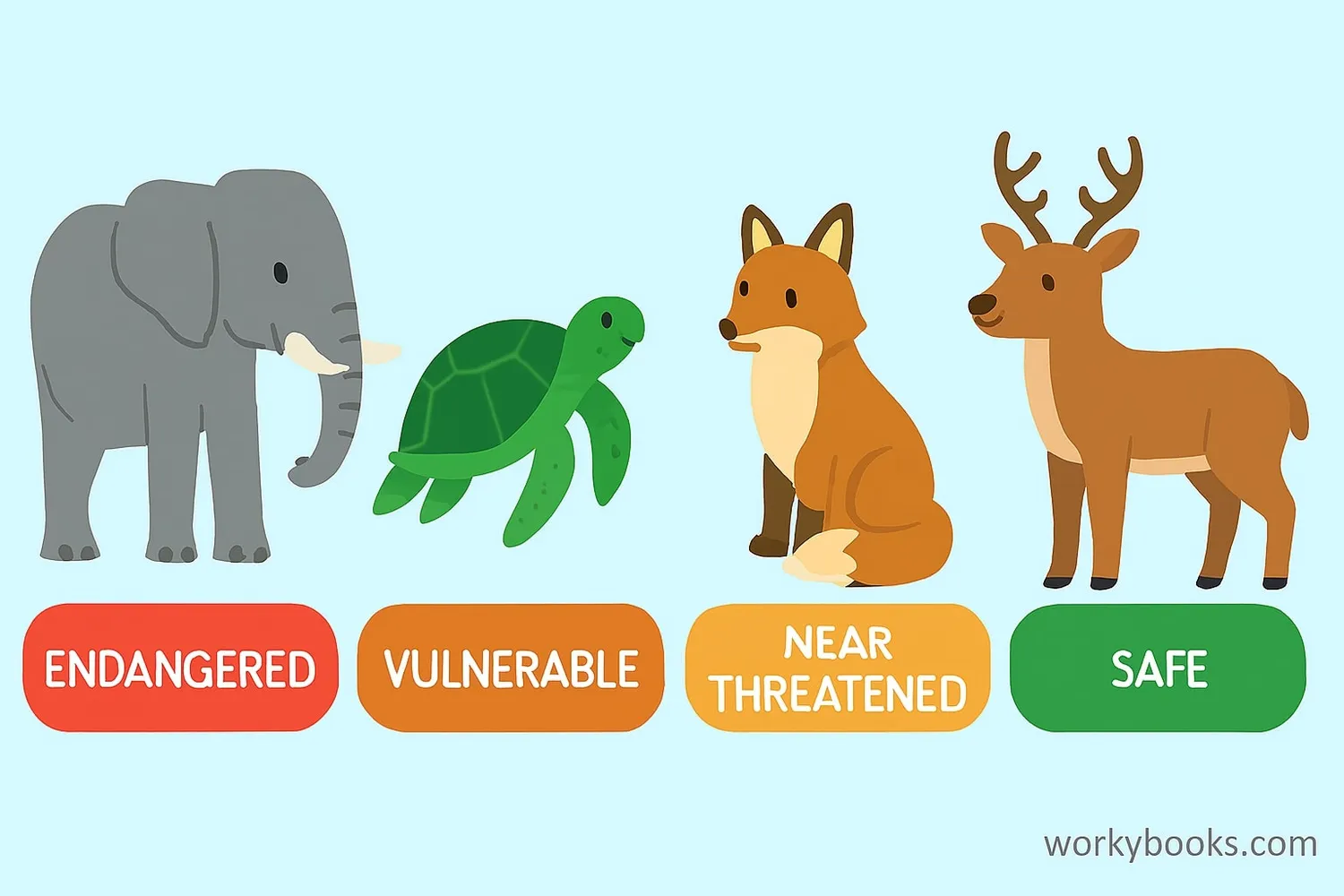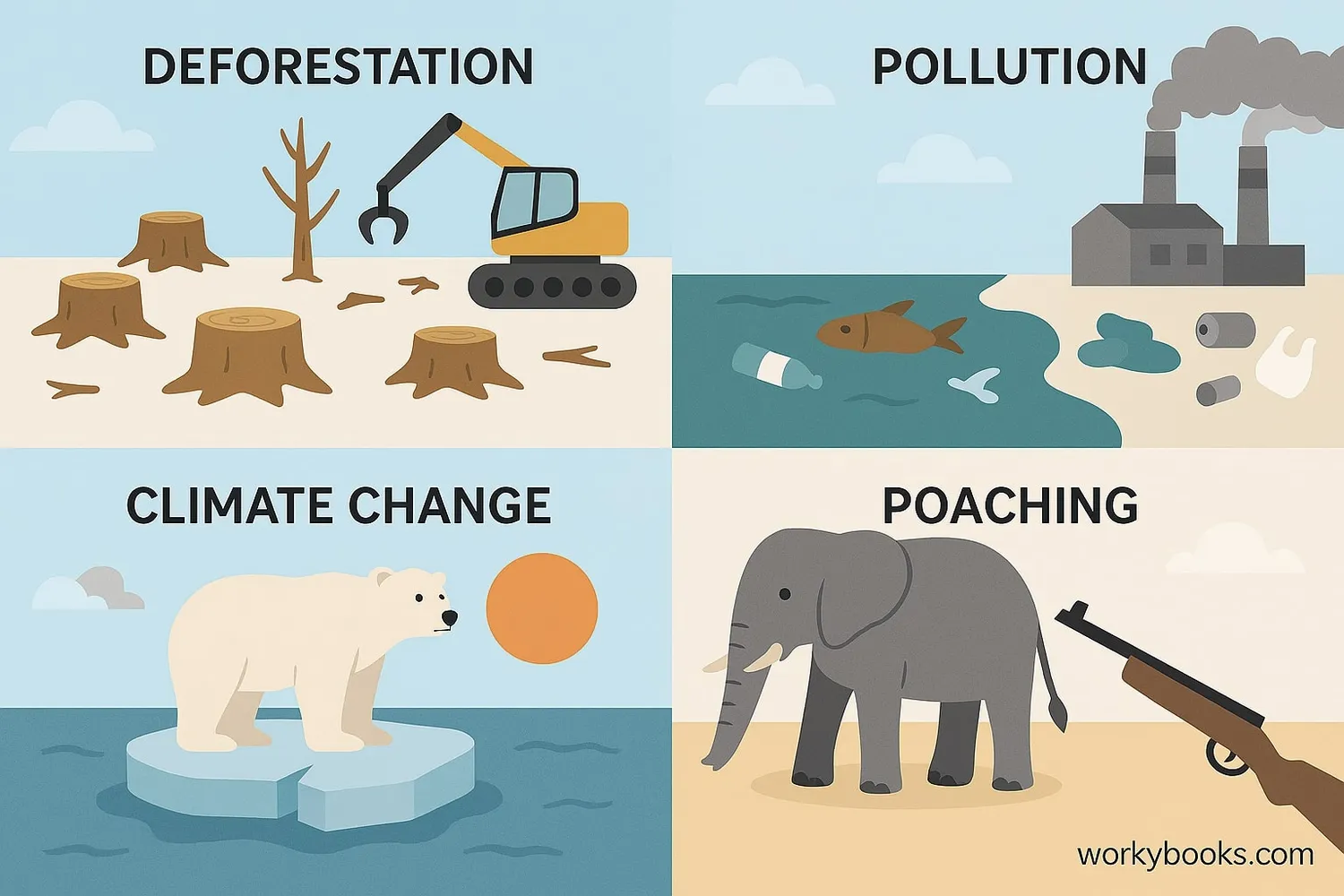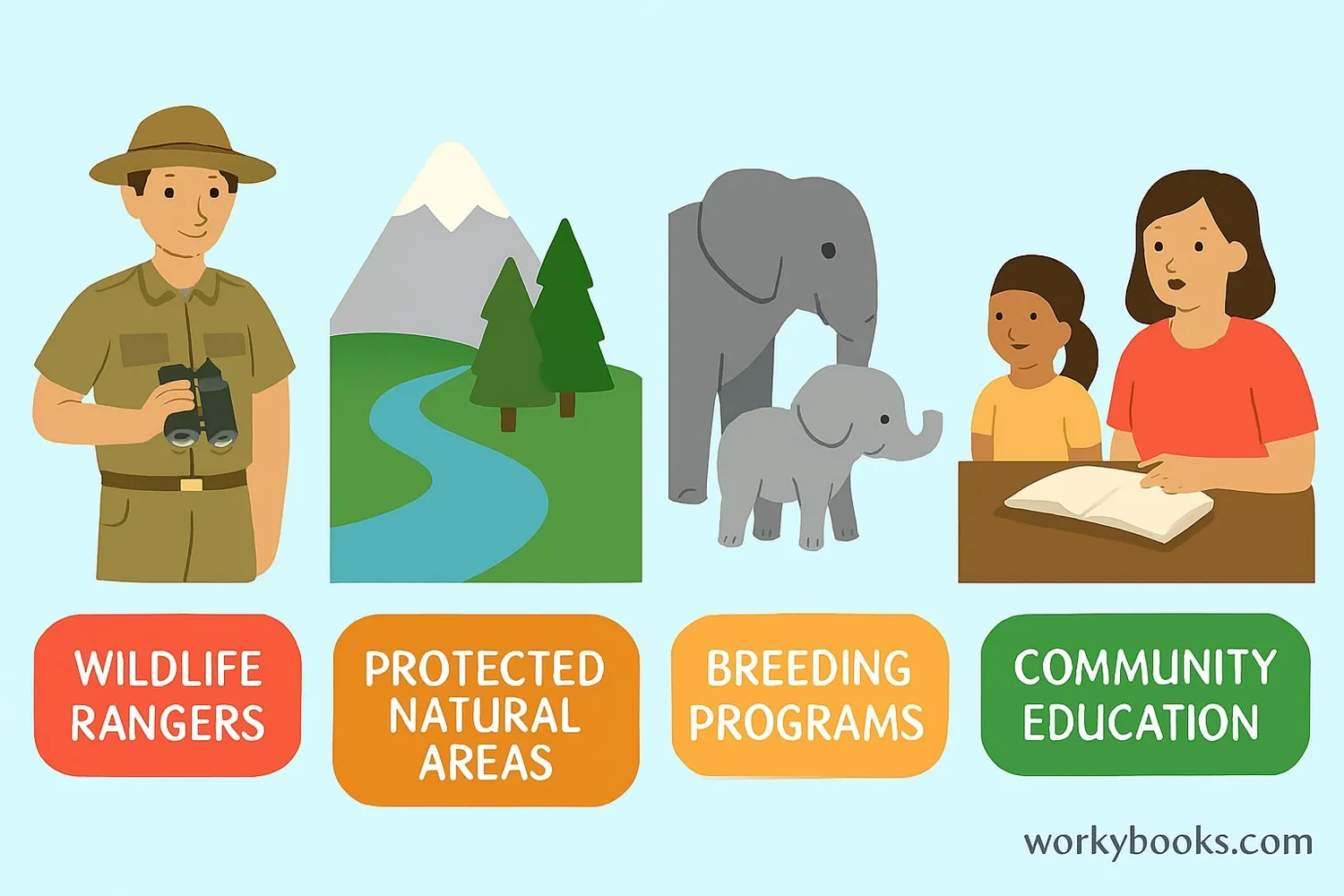Endangerment - Definition, Examples, Quiz, FAQ, Trivia
Learn about endangered species, conservation, and how we can protect biodiversity
What is Endangerment?

Endangerment refers to species that are at risk of becoming extinct. When a plant or animal species is endangered, it means there are very few of them left in the world, and they might disappear forever if we don't take action to protect them.
Scientists use special categories to describe how close species are to extinction:
Some well-known endangered species include giant pandas, tigers, blue whales, and black rhinos. When a species becomes extinct, it's gone forever, which is why it's so important to protect endangered plants and animals.
Biodiversity Matters!
Every species plays an important role in its ecosystem. When we lose one species, it can affect many others in the food web.
Causes of Endangerment

Species become endangered for many reasons. Most often, human activities are the main cause. Here are the primary reasons species become endangered:
Habitat Loss
When forests are cut down or wetlands are filled, animals lose their homes
Pollution
Chemicals, plastics, and other pollutants harm animals and their habitats
Climate Change
Changing temperatures affect food sources and habitats
Poaching
Illegal hunting of animals for their fur, horns, or other body parts
Invasive Species
Non-native animals or plants that disrupt ecosystems
Habitat loss is the biggest threat to most species. As human populations grow, we need more space for cities, farms, and roads. This often means destroying natural habitats where wild animals live.
Pollution can make water and air toxic for animals. Climate change is causing sea levels to rise and weather patterns to change, making it hard for some species to survive in their traditional habitats.
Connected Challenges
Often, species face multiple threats at once. For example, a tiger might lose habitat to deforestation and also be targeted by poachers.
Conservation Efforts

Conservation is the practice of protecting wild species and their habitats. Thanks to conservation efforts, many species have been saved from extinction. Here are some ways we work to protect endangered species:
Protected Areas
Creating national parks and wildlife reserves where animals are safe
Laws & Policies
Passing laws against poaching and illegal wildlife trade
Breeding Programs
Zoos and conservation centers breed endangered animals to increase their numbers
Successful conservation stories show that we can make a difference. The American bald eagle, once endangered, has made a remarkable comeback thanks to protection laws and banning harmful pesticides. Similarly, giant panda conservation efforts in China have helped move them from "endangered" to "vulnerable" status.
Individual actions matter too! You can help by:
• Learning about endangered species
• Supporting conservation organizations
• Reducing waste and recycling
• Choosing sustainable products
• Spreading awareness about conservation
Conservation Works!
Since 1993, conservation efforts have prevented up to 48 bird and mammal extinctions. With continued effort, we can save many more species.
Knowledge Check
Test your knowledge about endangerment and conservation with this quiz.
Frequently Asked Questions
Here are answers to common questions about endangerment:
Did You Know?
Discover interesting facts about endangerment and conservation:
Current Extinction Rate
Species are going extinct at 100 to 1,000 times the natural rate due to human activities. This is sometimes called the "sixth mass extinction" in Earth's history.
Keystone Species
Some species, called keystone species, have a huge effect on their environment. If they become endangered or extinct, it can cause entire ecosystems to collapse.
California Condor Comeback
In 1987, there were only 27 California condors left in the world. Through captive breeding programs, their population has grown to over 500 birds today.
Economic Value
Wildlife tourism generates over $120 billion annually worldwide. Protecting endangered species helps support local economies and creates jobs in conservation.


